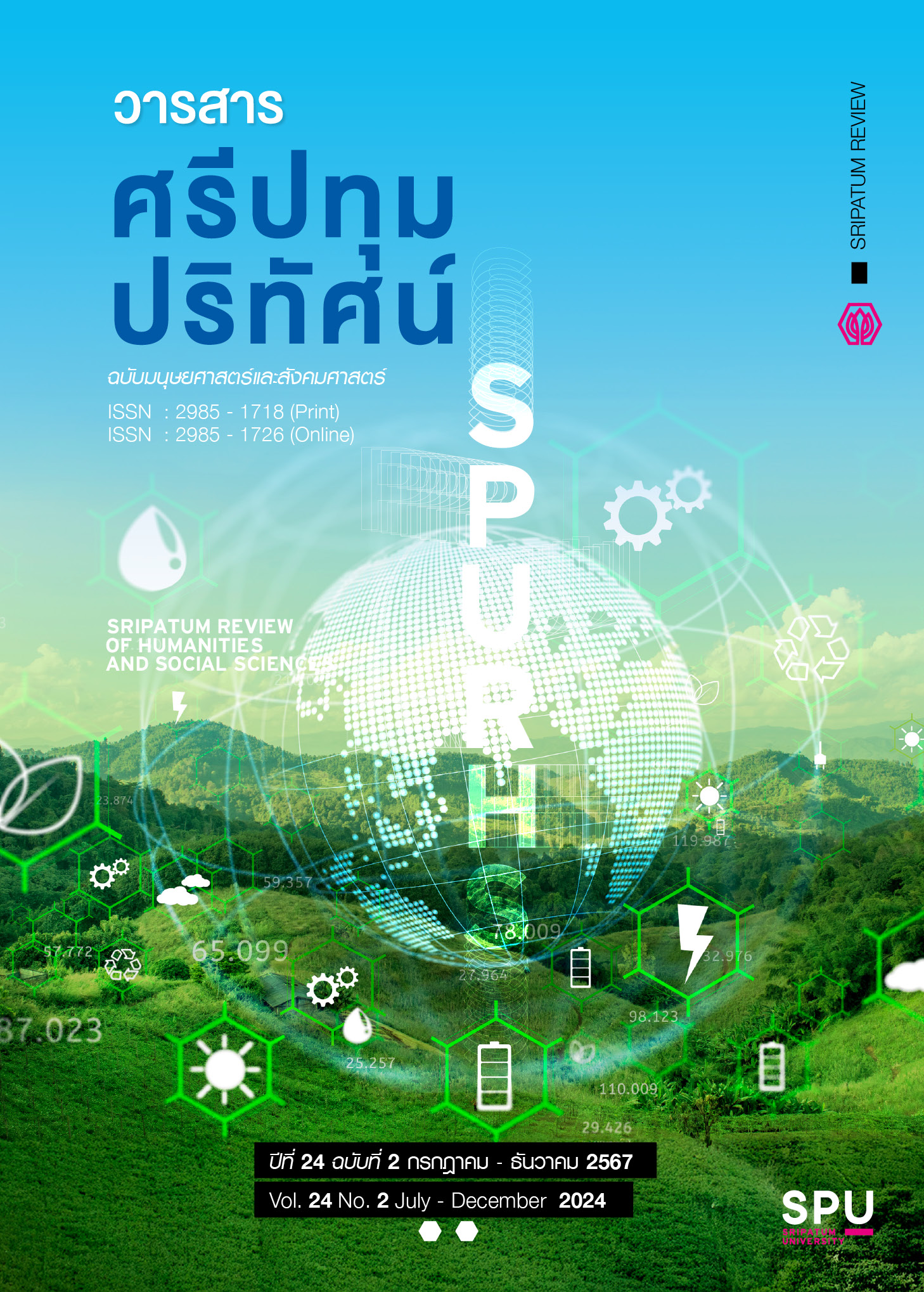The Mythologies of “Hia” Towards the Concept of Interactive Art for Awareness: A Case Study of Bang Hia, Samut Prakan Province
Main Article Content
Abstract
“Hia” or the monitor lizard, often considered by most Thais as an inauspicious animal, has been found through archaeological and historical evidence to have once been regarded as a sacred creature in ancient rain-calling ceremonies. It symbolized fertility, much like fish, crabs, and shrimp. Later, during the late Ayutthaya period, people migrated and established communities in the southern estuary region of Samut Prakan province, naming the area “Bang Hia” because it was a coastal wetland home to a large population of monitor lizards, as well as an abundance of aquatic animals. However, by the Rattanakosin period, myths, beliefs, and societal understandings shifted with time, and the status of the monitor lizard changed, taking on a negative connotation. The word Hia” became a derogatory term, symbolizing corruption and degradation. As a result, the cultural landscape of Bang Hia was altered, and the community’s name was changed to Khlong Dan, reflecting the prevailing beliefs of that era. In response, the author proposes an Interactive Art activity, utilizing art as a medium to encourage audience participation. This activity connects participants to explore and express their perspectives on the relationship between the community and monitor lizards, as well as the cultural narratives tied to the local history of Bang Hia. Moreover, the activity challenges the prevailing myths and negative images of the community by providing a space for participants to actively engage, question, and reinterpret these traditional ideas.
Article Details

This work is licensed under a Creative Commons Attribution-NonCommercial-NoDerivatives 4.0 International License.
1. กองบรรณาธิการสงวนสิทธิ์ในการพิจารณาและตัดสินการตีพิมพ์บทความในวารสาร
2. บทความทุกเรื่องจะได้รับการตรวจสอบทางวิชาการโดยผู้ทรงคุณวุฒิ แต่ข้อความและเนื้อหาในบทความที่ตีพิมพ์เป็นความรับผิดชอบของผู้เขียนแต่เพียงผู้เดียว มิใช่ความคิดเห็นและความรับผิดชอบของมหาวิทยาลัยศรีปทุม
3. การคัดลอกอ้างอิงต้องดำเนินการตามการปฏิบัติในหมู่นักวิชาการโดยทั่วไป และสอดคล้องกับกฎหมายที่เกี่ยวข้อง
References
Butree, P. (2008). “Monitor Lizard Tales” in Khlong Dan (1): Revisiting the Past of “Bang Hia”. In MGR Online. [Online]. Retrieved form: https://mgronline.com/travel/detail/ 9510000017899. (in Thai)
Chaipraditsak, S. (2008). The Nirat Mueang Klaeng, Part 5. In Revisiting the Legends of Samut Prakan. [Online]. Retrieved form: http://www.anurak-sp.in.th/legend/legend_38.pdf. (in Thai)
Phongsuksawat, W. (2007). The Julapatum Jataka: Observations on Its Role and Popularity in King Rama IV’s Era Paintings. Muang Boran Journal, 33(3), 59-69. (in Thai)
Vaskul, N. (2018). Study of the learning process and social interaction through creative art activities for early childhood development. Bangkok: Faculty of Fine Arts, Srinakharinwirot University. [Online]. Retrieved form: http://irithesis.swu.ac.th/dspace/bitstream/123456789/866/1/ gs571130396.pdf. (in Thai)
Wongsurawat, K. (2016). Monitor Lizards and the Proverb “Hate the Creature but Eat Its Eggs, Hate the Eel but Eat Its Soup”. [Online]. Retrieved form: https://www.matichon.co.th/columnists/ news_132070. (in Thai)
Wongthet, P. (1996). “Offering to the Tokay Gecko: The Rituals of the Kuy People of Ban Truem.” Silpa Wattanatham, 17(1), 84-97. (in Thai)
Wuttipityatorn, T. (2017). Interactive Aesthetics: Artistic Practices that Demand Viewer Participation. [Online]. Retrieved form: https://twilightinthegallery.wordpress.com/2017/11/27/. (in Thai)

